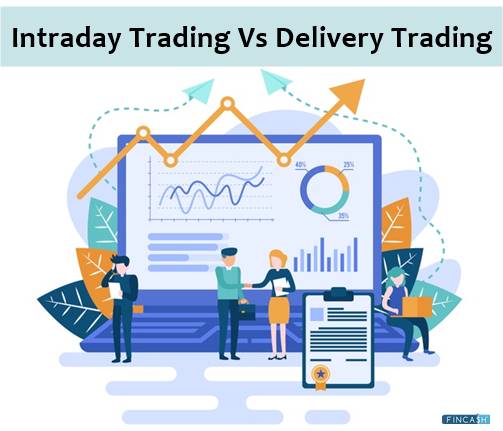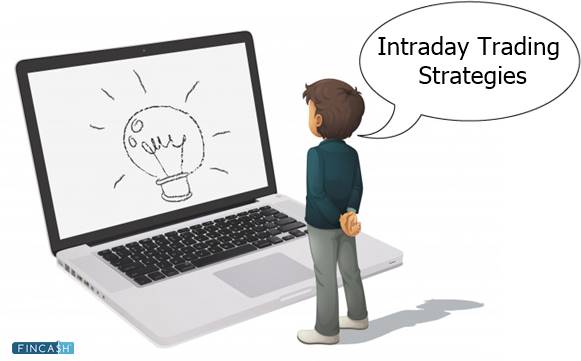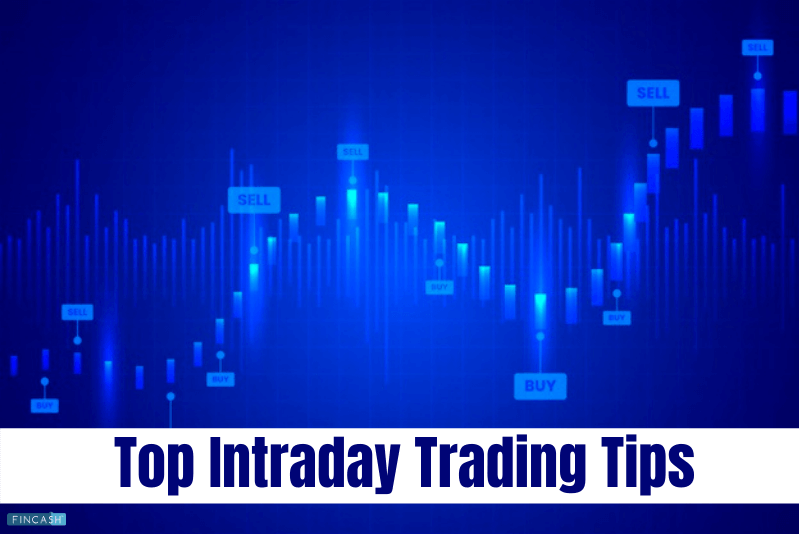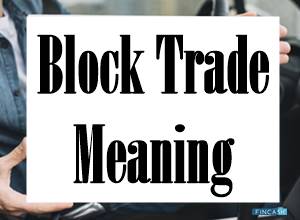Comprehend the Difference Between Intraday and Delivery Trading
Warren Buffett – he is the person a majority of people get inspired when it comes to Investing. Surely, you would have heard of him, isn’t it? When you look at his investment Portfolio, you will find an array of long-term shares. And, that is where relatively new investors start feeling confused. After all, making a portfolio for long-term trade may not be everyone’s cup of tea. That is where the perplexity to choose between intraday, and delivery-based trading comes into the picture.
While the strategies are different for these trading types, there are other substantial aspects as well that must be kept in mind while talking about the difference between intraday and delivery. Let’s put these two options together and figure out their differences in this post.

Defining Intraday Trades
This trading system comprises buying and selling stocks within the trading session, which is on the same day. If you Fail to square your position by the day end, your stock gets automatically sold at the closing price under specific brokerage plans.
Most of the traders initiate this trade by setting a price for stocks and buy them if they are trading lesser than the target. And then, they sell the stock when it gets to the target. And, if there is a prediction of the stock not reaching the target, traders can sell it at the price that seems to be the best.
Advantages of Intraday Trading
- You get to buy shares by paying only a certain part of the entire amount; thus, you get to invest less and gain more
- If you think that the price of a certain price may fall somewhere during the day, you can sell the share without purchasing it; this way, you can buy the stock later, depending on the price and earn a substantial profit
- In comparison with delivery-based trading, intraday has lower brokerage
Talk to our investment specialist
Disadvantages of Intraday Trading
- You cannot time the Market, and no predictions work in this type of trading; thus, no matter how well you have, the chances of earning, you cannot possess a stock for more than 24 hours
- In this trading, you don’t get to hold the stock on the Record Date of the rights issue, bonus, dividend, and more
- You have to be extremely cautious and track the market every minute
Defining Delivery-Based Trades
As far as delivery trades are concerned, the stocks purchased get added to the Demat account. They remain in the possession until you decide to sell. Unlike Intraday trading, this one doesn’t have a restricted time period. You can sell your stocks in days, weeks, months, or even years.
Advantages of Delivery-Based Trading
- You get the advantage of investing in a stock for a long time if you think that the company is doing good enough
- Risk is lower than intraday
Disadvantages of Delivery-Based Trading
- You have to pay the entire amount to buy stocks; this way, your funds are blocked until you decide to sell your shares
The Difference Between Delivery and Intraday Approaches
Now that you have understood the intraday and delivery difference, here is how the approach to trade them differ as well:
Volume Trade
This is defined as the number of times the shares of a company were purchased and sold within a day. The volume is generally higher for well-established and large organizations because of their reliability. Thus, if you are choosing intraday, experts would recommend you to stick to these trades.
In terms of those that are traded for a long-term, they depend lesser on the Volatility aspect as selling a stock can be deferred until it gets to the target price set by you.
Levels of Price
For both the trades, an ideal approach is to set price targets. However, this works better in intraday trades as these are more time-sensitive. With this method, you can gain more profitable opportunities.
For long-term trades, you can extend the period of investment even if you miss the target price. Several traders can revise the target upwards and possess the stock for long to acquire profit.
Analysis of the Investment
Usually, intraday trades are based upon technical indicators. These reflect the short-term price movement of the stock on the Basis of the historical price chart. Not just that, but this trading can be event-driven as well. However, none of these approaches can guarantee long-term success.
In concern with delivery-based trading, experts recommend fundamental analysis. This means investing in those companies that have a substantial long-term prediction. This needs an in-depth analysis of the business environment and internal operations of the company. But keep in mind that you would have to go through innumerable numbers and statistics to comprehend the financial situation of a company.
Difference Between Intraday and Delivery Trading: Which One Should You Choose?
Sure, intraday trading seems to lure, but it is not for everyone. As mentioned above, you would have to keep an eye on the market every minute to gain success. Also, choosing this type will compel you to depend upon technical aspects, such as algorithms and charts. Thus, if you are not comfortable with this approach, you must stay away from this trading type.
On the other hand, if you wish to make quick money by investing a few hours, then delivery-based trading is not a great option for you as this type requires a lot of patience. Along with that, it also requires investing money with the help of a fundamental approach.
All efforts have been made to ensure the information provided here is accurate. However, no guarantees are made regarding correctness of data. Please verify with scheme information document before making any investment.













Dhanyavad. AApka hindi me trading sikhane k liye